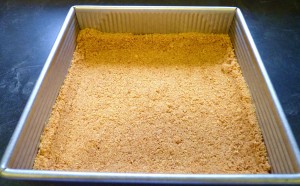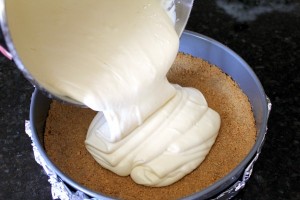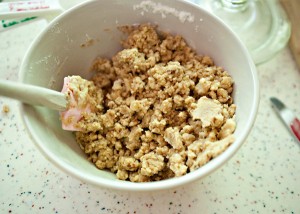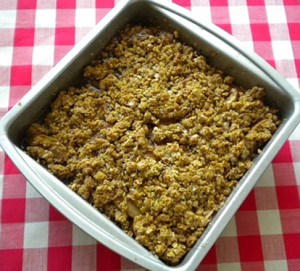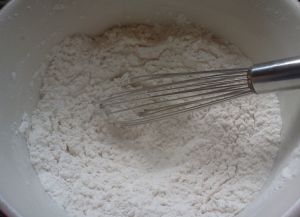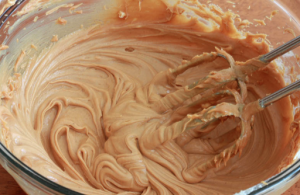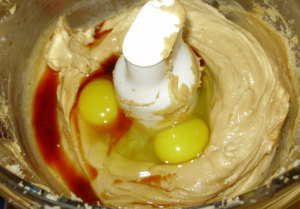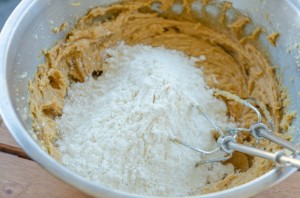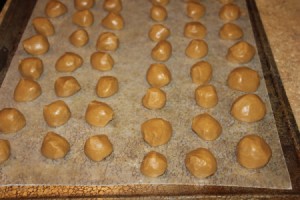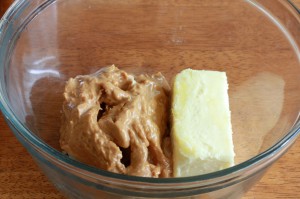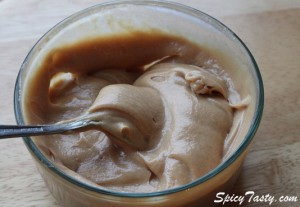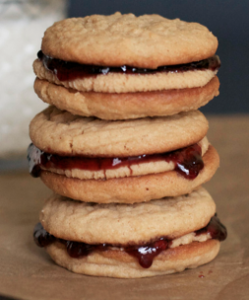Penn State Football Takes a Hard Hit
Pennsylvania State University students, alumni, football players, and coaches wake up on a Saturday morning and prepare themselves for game day. Penn State fans support our Nittany Lions a great deal. We wake up at odd hours of the night to secure our student season tickets. We support our Nittany Lions in the sweltering heat, the frigid cold, and the torrential rain. Penn State fans cheer on our team every Saturday in Beaver Stadium, on the radio, or on the Big Ten television network. Our student section takes pride in the “We are…Penn State” chant. Players, coaches, and fans sing the alma mater together before the start of every game to unite as one team. Penn State football plays a large role in the social life of students at the Pennsylvania State University; consequently, students and fans respect our team and look up to the players and coaches. Penn State football succeeded an uncountable number of times in the past; however, one event, the Sandusky Scandal, remains embedded in the minds of millions of individuals.
Penn State’s former football assistant coach, Jerry Sandusky, molested ten children on forty-five counts in 2011. Sandusky molested these innocent children on university property, in his car, and on nearby off-campus locations. Tim Curley, Gary Schultz, Joe Paterno, and Graham Spanier covered up Sandusky’s mistakes and failed to report suspected child abuse in fear of penalties brought to the school and our football team (Chappell). In the Washington Post article, Steve Yanda states, “The NCAA slammed Penn State with an unprecedented series of penalties in the wake of the Jerry Sandusky child sex abuse scandal” (Yanda). In my opinion, the NCAA blamed former, present, and future Penn State football players for the nauseating crime committed by Jerry Sandusky. The NCAA fined the school and the Penn State football team severely and unfairly. Were the school and the Penn State football team responsible for Sandusky’s actions? No. Sandusky and the university officials who knew of the heinous acts should have been the only subjects of investigation who received severe consequences.
Evidently, those who knew of the acts committed by Jerry Sandusky over the past fifteen years deserve harsh punishments. Jerry Sandusky coached at Penn State for thirty-two years. Due to his actions, Sandusky’s sentence consisted of thirty years in prison, which is not nearly enough time for the physical and emotional pain as well as discomfort he put ten children through. As a subject of investigation, Joe Paterno said, “I wish I had done more” (Chappell). JoePa cared more about the consequences his beloved football team would acquire. It is unfathomable how a football coach of sixty years risked everything he worked so hard for to protect one of his coaches. Responsible officials at Penn State took appropriate actions against the former university officials involved in the Sandusky Scandal. The university officials deserved their punishments because their failure to report Sandusky’s illegal actions individually brings about disgust.
The NCAA announced the penalties and corrective actions against Penn State University and the football team on July 23, 2012. One sanction involved the payment of sixty million dollars over the course of five years. The sixty million dollars will fund programs that prevent child sexual abuse. The NCAA “imposed a four-year postseason ban on Penn State football, significantly reduced the number of scholarship players the team can field over the next four years, and placed the program on probation for five years” (Yanda). The penalties brought upon Penn State punish the wrong individuals. Sandusky and the university officials no longer possess ties with Penn State so placing the sanctions on the school and the football team will certainly not erase the situation. The sanctions only punish the school, players, and coaches not involved in the scandal.
On game day, the Penn State football team runs onto the field anxious for a win. It is important for our team to win games so we can increase our rankings. The team’s ranking significantly decreased when one of the sanctions imposed vacated 112 wins from Penn State football. Steve Yanda states, “The most significant individual sanction in the context of college football history is that all of Penn State’s wins from 1998 to 2011 have been vacated” (Yanda). The most significant individual sanction, in my opinion, is not the vacated wins. Although my heart breaks to see the players hard work stripped from them, not Joe Paterno’s number of wins as a coach, the only significance of the imposed sanctions involves how Penn State acts and responds in the future. The NCAA hopes these sanctions will deter the environment of many Division I athletic departments (Yanda).
The NCAA is egotistical and used their power to punish the wrong people. Why does the NCAA believe that they have the right to control four years of Penn State football? The NCAA is full of themselves and tried to solve the problem in the best way to make themselves look good (Ryan). PolicyMic’s Christopher Ryan states, “The NCAA’s punishments may make the NCAA look good, but they do little to serve justice” (Ryan). The sanctions imposed by the NCAA only remind Penn State students, alumni, and fans about the abject failure of their so-called leaders (Greenstein). The sanctions cap the number of athletes who can get a free ride to college. They put current Penn State football players under the microscope. The NCAA is arrogant and should not be the organization punishing the University. In order to truthfully serve justice, “we should look not to the NCAA, but to civil and criminal courts” (Ryan).
The sanctions imposed by the NCAA brought about powerful responses from the public. Melanie Rognstad of the College of Lake County articulated, “I understand that this is a very sad situation but I don’t think the NCAA should punish the students and athletes” (Prisbell). The NCAA is penalizing “a whole school for a very few bad apples” as said by Kevin Pierson (Prisbell). Janet Mayo believes that Penn State allowed itself to be part of a horrendous crime; however, Tom Witner strongly disagrees when he states, “Individuals at Penn State allowed a horrendous crime to occur” (Prisbell). Penn State University as a whole is certainly not responsible for the heinous acts of the scandal.
The purpose of the sanctions was to lessen the power that Penn State football possesses. The NCAA wanted to impose sanctions that would, “ensure that Penn State will rebuild an athletic culture that went horribly awry” (Yanda). The sanctions imposed will not rebuild the athletic culture of Penn State because the sanctions impact football athletes, many of whom were not even part of Penn State football while the scandal took place. The idea that the sanctions will lessen the superiority of Penn State football exhibits absurdity. Penn State football is associated with the University and a sanction will not be able to bring down our team or school. The NCAA believes the sanctions imposed will reflect the magnitude of these terrible acts (Yanda). ESPN disputes the reports made in the Washington Post article. As ESPN states “No price the NCAA can levy will repair the grievous damage inflicted by Jerry Sandusky on his victims” (Katz). No matter if the NCAA placed the sanctions on the school or the football team, no punishment will erase the horror Jerry Sandusky imposed.
Responsible Penn State officials were left with no choice but to accept the penalties committed by a few sickening individuals. Current Pennsylvania State University president, Rodney Erickson, declared that the entire Penn State culture was involved in the Sandusky scandal, not just Jerry Sandusky and the four university officials. Erickson “accepted the penalties and corrective actions announced by the NCAA” (Yanda). By accepted the penalties, Erickson demonstrates his belief that the entire Penn State culture was involved. Accorded to victim number one of ten, Aaron Fisher articulated, “Do I blame Penn State? No. Do I blame Penn State students? No, not at all. Their students had nothing to with this” (Beckler). Aaron Fisher believes the sanctions imposed on the University and its students are unjust because they penalize the wrong people. Aaron Fisher expressed his belief, which opposes that of Erickson, that the entire Penn State culture was not involved in Jerry Sandusky’s actions.
Jerry Sandusky, an abominable man, changed Penn State forever. Sandusky’s appalling actions toward ten innocent children cannot be undone and will forever linger over Penn State culture. Pennsylvania State University remains unashamed of who WE ARE. Penn State believes in world-class academics and success with honor. Nick Elia depicts Penn State’s culture when he articulates, “Penn Staters have a passion for success with honor in every discipline – academic, athletic, and philanthropic. We’re proud to make athletics a part of our lives and student athletes are proud to come here because of our expectations of integrity, honor, and education” (Elia). One individual cannot bring down Penn State culture; moreover, Sandusky cannot take the pride out of 46,184 University Park students. Penn State fans, students, and athletes consider themselves leaders of child abuse prevention and we will continue to support our Nittany Lions (Elia). Pennsylvania State University will never show shame in our culture because Penn State remains strong and one man will never redefine Penn State.
Works Cited
Beckler, Ryan. “Victim 1: “Do I Blame Penn State? No.”.” Onward State. Onward State, 24 Oct.
2012. Web. 12 Mar. 2014. <https://onwardstate.com/2012/10/24/victim-1-do-i-blame-
penn-state-no/>.
Chappell, Bill. “Penn State Abuse Scandal: A Guide And Timeline.” NPR. NPR, 21 June 2012.
Web. 11 Mar. 2014. <http://www.npr.org/2011/11/08/142111804/penn-state-abuse-
scandal-a-guide-and-timeline>.
Elia, Nick. “Don’t Be Ashamed of Penn State’s Culture.” Onward State. Onward State, 27 July
2012. Web. 12 Mar. 2014. <http://onwardstate.com/community/dont-be-ashamed-of-
penn-states-culture/>.
Greenstein, Teddy. “Today’s Question: Were Penn State Sanctions Too Harsh?” Chicago Tribune. Chicago Tribune, 23 July 2012. Web. 11 Apr. 2014. <http://articles.chicagotribune.com/2012-07-23/sports/chi-todays-question-were-penn- state-sanctions-too-harsh-20120723_1_bowl-ban-death-penalty-penn-state>.
Katz, Andy, and Mark Schlabach. “Penn State Sanctions: $60M, Bowl ban.” ESPN. ESPN
Internet Ventures, 24 July 2012. Web. 12 Mar. 2014. <http://espn.go.com/college-
football/story/_/id/8191027/penn-state-nittany-lions-hit-60-million-fine-4-year-bowl-ban-
wins-dating-1998>.
Prisbell, Eric. “NCAA Hands out Severe Punishment for Penn State.” USATODAY.COM. USA TODAY, 23 July 2012. Web. 09 Apr. 2014. <http://usatoday30.usatoday.com/sports/college/football/bigten/story/2012-07-23/ncaa- penn-state-punishment-sanctions/56427630/1>.
Ryan, Christopher. “Penn State NCAA Sanctions Go Too Far.” PolicyMic. Mic Network Inc., 23 July 2012. Web. 11 Apr. 2014. <http://www.policymic.com/articles/11704/penn-state- ncaa-sanctions-go-too-far>.
Yanda, Steve. “Penn State Football Punished by NCAA over Jerry Sandusky Scandal.”
Washington Post. The Washington Post, 23 July 2012. Web. 12 Mar. 2014.
<http://www.washingtonpost.com/sports/penn-state-football-punished-by-ncaa-over
sandusky-scandal/2012/07/23/gJQAGNeM4W_story.html>.
